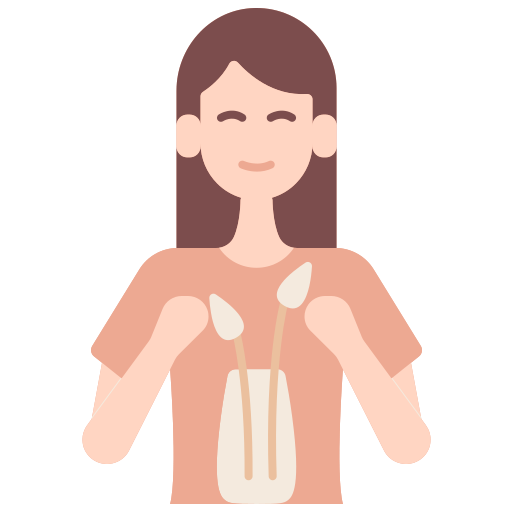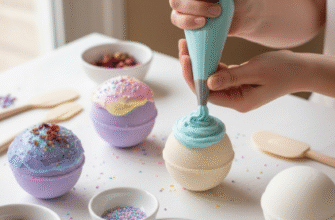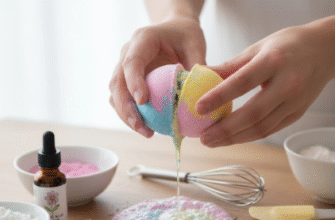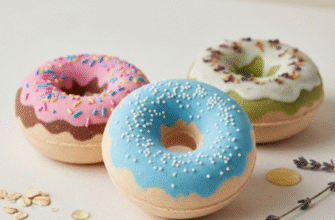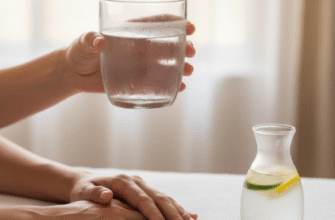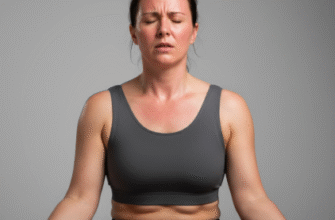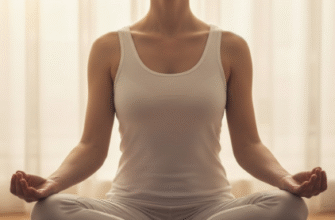Taking a few moments for self-massage can feel like a mini-retreat, a way to reconnect with your body and ease the day’s tensions. But did you know you can potentially amplify those benefits by introducing temperature? Playing with heat and cold alongside your massage routine isn’t just about feeling good in the moment; it taps into your body’s natural responses to temperature changes, potentially making your self-care efforts even more effective for general well-being.
Getting Warm: The Soothing Power of Heat
Think about how a warm bath melts away stress. Heat therapy, or thermotherapy, works on a similar principle when combined with massage. Applying warmth to your muscles encourages blood vessels to widen, a process called vasodilation. This increased blood flow brings more oxygen and nutrients to the tissues, which can help them feel more pliable and relaxed. It’s like gently coaxing tight muscles to let go.
Benefits of Using Heat with Self-Massage:
- Easing Stiffness: Warmth can make muscles and connective tissues feel more flexible, reducing that locked-up sensation, especially helpful before you start massaging.
- Promoting Relaxation: Heat has a naturally calming effect on the nervous system, enhancing the relaxing aspect of your massage.
- Preparation: Applying heat *before* you massage can warm up the tissues, potentially allowing you to work a little deeper or more comfortably without forcing anything.
How to Incorporate Heat:
You don’t need fancy equipment. Simple household items often do the trick.
- Warm Compresses: A microwavable heat pack (filled with rice, flaxseed, or gel) or even a dampened towel heated carefully in the microwave (test temperature first!) can be placed on an area for 10-15 minutes before massaging.
- Warm Shower or Bath: Soaking in warm water before your self-massage session is an excellent way to warm up larger areas of the body, like your back, shoulders, or legs.
- Heated Massage Tools: Some self-massage tools come with a heating element. Use these cautiously according to manufacturer instructions, ensuring they don’t get too hot against the skin.
- Warm Oils or Lotions: Gently warming your massage oil or lotion (by placing the bottle in a bowl of hot water) can add a subtle, soothing warmth during application.
Generally, heat feels best for ongoing tightness, general muscle soreness that isn’t from a brand-new injury, and pre-activity warm-ups where you want to encourage flexibility alongside some light massage.
Cooling Down: The Refreshing Role of Cold
Just as heat expands, cold contracts. Cryotherapy, or cold therapy, causes blood vessels to narrow (vasoconstriction). This reduces blood flow to the immediate area, which can help lessen swelling and temporarily numb nerve endings, providing a sensation of relief from sharp, acute discomfort.
Benefits of Using Cold with Self-Massage:
- Reducing Puffiness: The vasoconstriction effect can help minimize temporary swelling, perhaps after a particularly strenuous workout.
- Temporary Numbing: Cold can dull the sensation of soreness, making the area feel less reactive.
- Post-Activity Soothing: Applying cold after intense activity might help calm down worked tissues.
How to Incorporate Cold:
Safety first – always protect your skin from direct contact with ice.
- Cold Packs: Gel packs kept in the freezer or even a bag of frozen peas wrapped in a thin towel work well. Apply for 10-15 minutes at a time.
- Ice Massage: Freeze water in a paper cup, then peel back the paper rim to expose the ice. Use this to massage a specific area gently and continuously (don’t hold it still) for 5-7 minutes, always through a thin cloth or moving constantly to avoid ice burn.
- Chilled Massage Tools: Some massage balls or rollers can be chilled in the refrigerator or freezer. The coolness adds another dimension to the pressure.
- Cool Water Immersion: While less common for targeted self-massage, a cool bath or shower can provide general cooling relief after exertion.
Cold is often reached for soon after strenuous activity when muscles feel overworked and slightly puffy, or for temporary relief around a minor bump. It’s generally used *after* activity, whereas heat is often used *before*.
Important Safety Note: Never apply heat or cold directly to bare skin for extended periods. Always use a barrier, like a towel, to prevent burns or skin damage. Limit applications to 15-20 minutes at a time, and allow your skin temperature to return to normal between applications. Pay close attention to how your skin looks and feels.
Smart Combinations: Heat, Cold, and Your Hands
So, how do you effectively blend these temperature techniques with your actual self-massage?
Heat Before or During Massage:
Applying heat *before* you begin massaging is a popular approach. Warm the target muscles (e.g., shoulders with a heat pack) for 10-15 minutes. Then, remove the heat source and begin your massage. The tissues should feel more receptive and relaxed. You can also use a heated tool *during* the massage, moving it continuously and ensuring it’s not uncomfortably hot. Think of using a warm stone (or a specialized heated tool) to glide over muscles.
Cold After or Around Massage:
Cold is often best used *after* activity or potentially after a deep self-massage session if you feel some residual puffiness. Apply a cold pack wrapped in a towel to the area for 10-15 minutes. You can also use cold *around* a particularly tender spot. For instance, if one specific point feels acutely sensitive after a workout, apply gentle massage to the surrounding muscles first, then apply a cold pack to the sensitive spot itself. Ice massage, moving the ice continuously over the area through a cloth for a short duration (5-7 mins), can target specific points.
Considerations for Combining:
Think about your goal. If you want to loosen general stiffness before massaging, heat is your friend. If you’re dealing with post-workout soreness and a bit of puffiness, cold might be more appropriate. Avoid applying heat to areas that already feel inflamed or look swollen and red. Conversely, avoid extensive cold application if your muscles already feel very tight and restricted – warmth might be better first.
Listen to Your Body: The Ultimate Guide
The most crucial element in using heat or cold with self-massage is paying attention to your own body’s signals. What feels soothing and helpful to one person might not for another, and what works one day might not be right the next.
Key Precautions:
- Protect Your Skin: This bears repeating. Always use a towel or cloth barrier between the heat/cold source and your skin.
- Moderate Temperatures: Avoid extremes. Heat shouldn’t be scalding; cold shouldn’t cause painful burning or numbness.
- Time Limits: Stick to recommended application times (usually 15-20 minutes for heat, 10-15 for cold packs, 5-7 for direct ice massage) to prevent skin issues.
- Acute Injury Awareness: Do not apply heat to a fresh injury where swelling is prominent. Cold is generally preferred in the initial stages (first 24-48 hours) of minor bumps or overexertion.
- Circulation Concerns: If you have known circulation issues, be extra cautious with both heat and cold, as temperature regulation might be impaired.
- Listen In: If something feels uncomfortable, painful, or causes adverse skin reactions (like excessive redness, blistering, welts, or paleness/blueness with cold), stop immediately.
This isn’t about treating medical conditions; it’s about enhancing your general self-care routine. If you have persistent, severe pain or a diagnosed condition, these techniques are not a substitute for professional medical advice or treatment.
Verified Benefit: Both heat and cold therapy work by influencing blood flow. Heat increases circulation (vasodilation), helping to relax tissues and bring nutrients. Cold decreases circulation temporarily (vasoconstriction), which can help reduce immediate swelling and numb soreness. Understanding this basic mechanism helps you choose the right approach for your self-massage goals.
Enhancing Your Self-Care Ritual
Integrating heat or cold into your self-massage practice can elevate it from simple muscle rubbing to a more nuanced form of self-care. By understanding how temperature affects your tissues – warmth relaxing and loosening, cold calming and numbing – you can tailor your approach. Warming up tight shoulders before massage, using a chilled roller on tired feet after a long day, or applying a cool pack after intense garden work followed by gentle surrounding massage are all ways to make your self-care more responsive and potentially more beneficial. Remember the safety guidelines, listen closely to your body’s feedback, and enjoy the added dimension that temperature can bring to your personal wellness routine.
